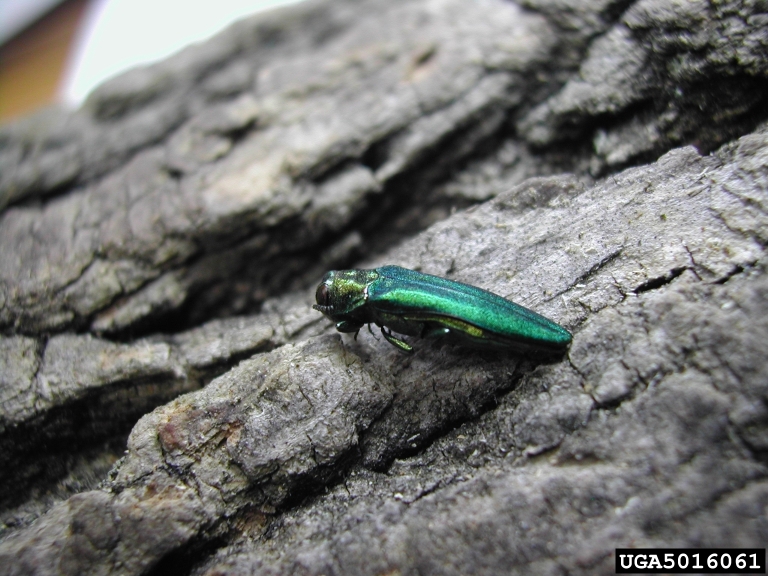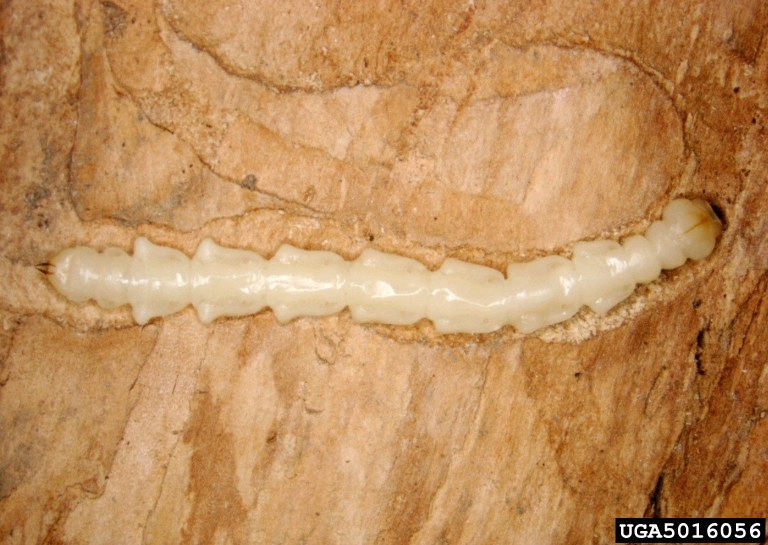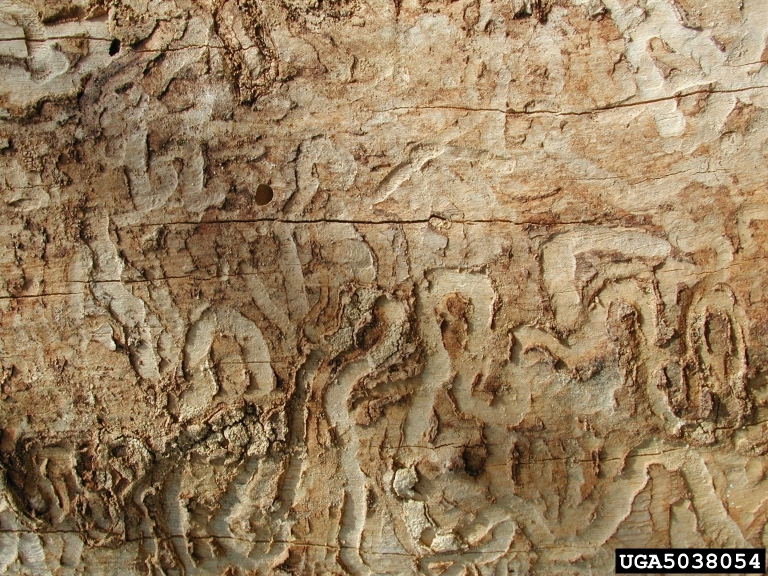Emerald Ash Borer
The emerald ash borer is a metallic green beetle that bores into ash trees, feeding on tissues beneath the bark, ultimately killing the tree.

and Natural Resources – Forestry, Bugwood.org
About the Emerald Ash Borer
The adult beetle is dark metallic green, bullet-shaped and about 8.5 millimeters (0.33 in) long and 1.6 mm (1⁄16 in) wide. The body is narrow and elongated, and the head is flat with black eyes. The larvae are approximately 1 mm (1⁄25 in) diameter, 26 to 32 millimeters (1.0 to 1.3 in) long, and are a creamy white color. The eggs turn to a yellow-brown color prior to hatching.
Adults lay eggs in crevasses in the bark. Larvae burrow into the bark after hatching and consume the cambium and phloem, effectively girdling the tree and causing death within two years. The average emerging season for the emerald ash borer is early spring to late summer. Females lay around 75 eggs, but up to 300 from early May to mid-July. The borer’s life cycle is estimated to be one year in southern Michigan but may be up to two years in colder regions.
Life Cycle of the Emerald Ash Borer

and Natural Resources – Forestry, Bugwood.org
The adult emerald ash borer emerges in May–July, and the female lays numerous eggs in bark crevices and between layers of bark. The eggs hatch in 7–10 days, and larvae bore into the tree where they chew the inner bark and phloem creating winding galleries as they feed. This cuts off the flow of the water and nutrients in the tree, causing dieback and death.
Hosts
Emerald ash borer (EAB) is native to Asia. It is known to be established in 35 states and five Canadian provinces. EAB arrived in the United States in 2002 on solid wood packing material from Asia. Hosts include all ash species; however, green ash, white ash, and black ash are more susceptible than Asian varieties.
Damage Caused by the Emerald Ash Borer

Vertical splits in the bark are created by the tree forming callus tissue in response to larval feeding. The damage by the larvae causes general yellowing and thinning of the foliage followed by crown dieback and the eventual death of the tree. Basal sprouting and the presence of woodpeckers may indicate wood-boring beetle activity. After 1 to 2 years of infestation, the bark often falls off in pieces from damaged trees, exposing the insect galleries.
How to Control Emerald Ash Borer
Recent research has shown that several chemical and biological agents are providing promising results in controlling the spread the EAB. The USDA APHIS in Michigan is testing the effects of three parasitoids (Tetrastichus planipennisi, Oobius agrili, and Spathius agili) to consume the EAB at various stages of its development.
The Canadian Forest Service has been injecting a naturally-produced compound from the Neem seed, which appears to be effective in inhibiting EAB larval development and preventing adult emergence. A third compound, emamectin benzoate (marketed under the name of Tree-age), has received emergency licensing in several states as a chemical to be injected into Fraxinus species to kill EAB larvae and adults.
If you would like more information about the emerald ash borer, please contact your local MFC forester.
